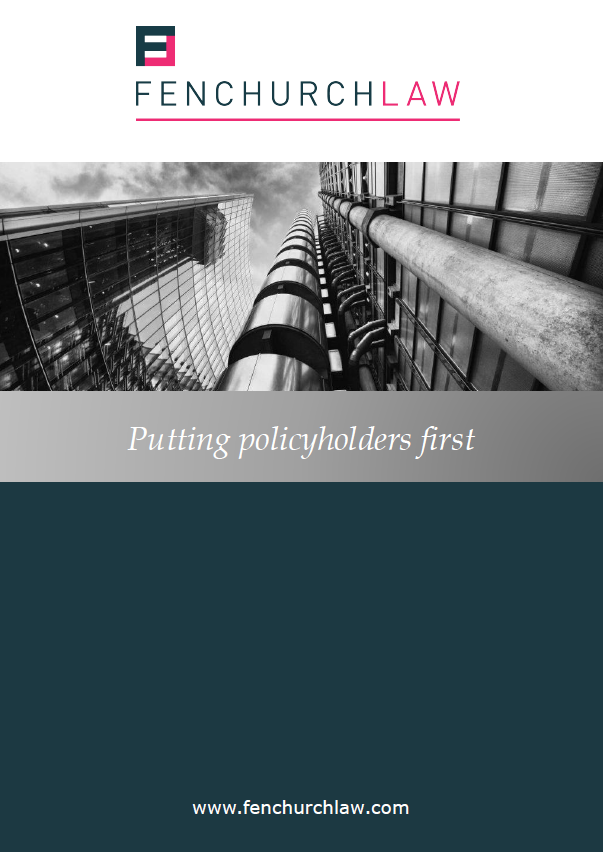
The Good, the Bad & the Ugly: #13 (The Bad). Haberdashers’ Aske’s Federation Trust & v Lakehouse Contracts
Welcome to the latest in the series of blogs from Fenchurch Law: 100 cases every policyholder needs to know. An opinionated and practical guide to the most important insurance decisions relating to the London / English insurance markets, all looked at from a pro-policyholder perspective.
Some cases are correctly decided and positive for policyholders. We celebrate those cases as The Good.
Some cases are, in our view, bad for policyholders, wrongly decided, and in need of being overturned. We highlight those decisions as The Bad.
Other cases are bad for policyholders but seem (even to our policyholder-tinted eyes) to be correctly decided. Those cases can trip up even the most honest policyholder with the most genuine claim. We put the hazard lights on those cases as The Ugly.
At Fenchurch Law we love the insurance market. But we love policyholders just a little bit more.
#13 (The Bad)
Haberdashers’ Aske’s Federation Trust Ltd & others v (1) Lakehouse Contracts Ltd & (2) Cambridge Polymer Roofing Ltd [2018] EWHC 588 (TCC)
This case arose from fire damage to a school during construction works. The main contractor (“Lakehouse”) settled proceedings brought by the claimants for £8.75million, paid by the project insurers, and sought to recover £5million from its roofing sub-contractor (“CPR”), being the limit of indemnity under a separate CAR/liability policy taken out by CPR in accordance with express terms of the building contract.
The court was required to determine as a preliminary issue whether CPR was covered under the project policy, which included Lakehouse and its sub-contractors as insureds, and agreement of insurers by endorsement to “waive all rights of subrogation which they may have or acquire against any insured party”. The court held that CPR was not insured under the project policy, given the clear intention expressed in the sub-contract for CPR to take out and rely on its own insurance cover.
In reaching this conclusion, the Judge considered competing theories as to how a sub-contractor may obtain the benefit of project insurance, i.e. (1) the main insured acting as agent, with its conduct subsequently ratified by the sub-contractor (this was considered problematic as sub-contractors would not necessarily have been ascertained at the time of policy inception, nor be able to ratify if they had no insurable interest as yet); (2) a “standing offer” by project insurers to provide cover for members of a defined group; or (3) acceptance by the sub-contractor’s conduct that it would become an insured under the project policy. The standing offer rationale was considered to be the most appropriate.
An appeal was listed in January 2019 but the case settled before the hearing. Given a number of difficulties with the first instance decision, it is unfortunate that the opportunity for further debate and clarification in the Court of Appeal was missed on this occasion.
The Haberdashers judgment seems unfair in terms of a windfall for project insurers, who receive premium based on cover for sub-contractors of any tier, despite sub-contracts likely imposing additional insurance obligations. It is impossible for insurers to accurately rate their exposure on this basis, without knowing at the time of writing the project policy what limits a future (as yet unidentified) sub-contractor may or may not take out.
It seems odd that terms of a contract between third parties should determine who is insured under a pre-existing project policy. The decision effectively confines the scope of project insurers’ standing offer to provision of cover for “sub-contractors who have not agreed to obtain their own insurance” but such a limitation was nowhere to be found in the terms of the project policy.
Given the express waiver of subrogation rights, the reasoning seems inconsistent with the Supreme Court majority view in Gard Marine – that a strong presumption applies in favour of an implied term precluding claims between co-insureds (even if the contract contains an express warranty from the defendant to protect insured property); and the effect of co-insurance is to exclude – as opposed to discharge – liability as between co-insureds. On this reasoning Lakehouse would have no liability to the claimants, which suggests that there is no basis on which a back-to-back claim could be pursued against CPR.
The subrogated claim against CPR was limited to £5million and the Judge suggested (obiter) that project insurers would not have been able to recover the full loss, i.e. the additional £3.75million settlement sum, as it was surely not anticipated that CPR would bear any additional uninsured loss where there was project insurance in place with a higher limit. This was not fully explained in the judgment and begs the question of whether a hybrid situation could arise whereby a sub-contractor is not co-insured up to the limit of its own separate cover, but in excess of that level, becomes insured by the project policy. Further peculiarities as to apportionment of liability could arise where a mismatch occurs between the scope of cover under a project policy and the sub-contractor’s liability insurance, giving rise to significant uncertainties for policyholders and insurers alike.
In our view, the decision in Haberdashers is a bad one. We prefer the approach adopted by the Court of Appeal in Rathbone Brothers v Novae, to the effect that an overlapping insurance situation may arise, even where one policy was specifically intended to cover the loss in question.
Debate as to whether, and in what circumstances, primacy should be given to express allocation of risk within a construction contract as opposed to inferences drawn from the existence of a project policy is likely to continue. Even if a contractor is presumed to fall within the definition of insured parties under a project policy, it should ensure that risk allocation and insurance provisions in its construction contract(s) are consistent, for example by specifying that any separate insurance required to be taken out by the contractor should operate in excess of the project cover, to minimise the prospect of subrogated claims.
Amy Lacey is a partner at Fenchurch Law.
Other news
PFAS – Out of the Frying Pan into the Court Room?
26 November 2025
Fenchurch Law considers the impact of PFAS on the UK insurance sector, following the rise of litigation progressing…
You may also be interested in:
Archives
Categories
- The Good, the Bad and the Ugly
- Fenchurch Law Webinars
- Stonegate
- Newsletter
- Events
- Webinars
- Comparing German and English Insurance Law – A Series
- Construction Risks
- Operations
- Business Development
- Construction & Property Risks
- News
- International Risks
- Legislation
- Financial & Professional Risks
- Case Law
- Professional Risks
- Press Release
- Uncategorized



